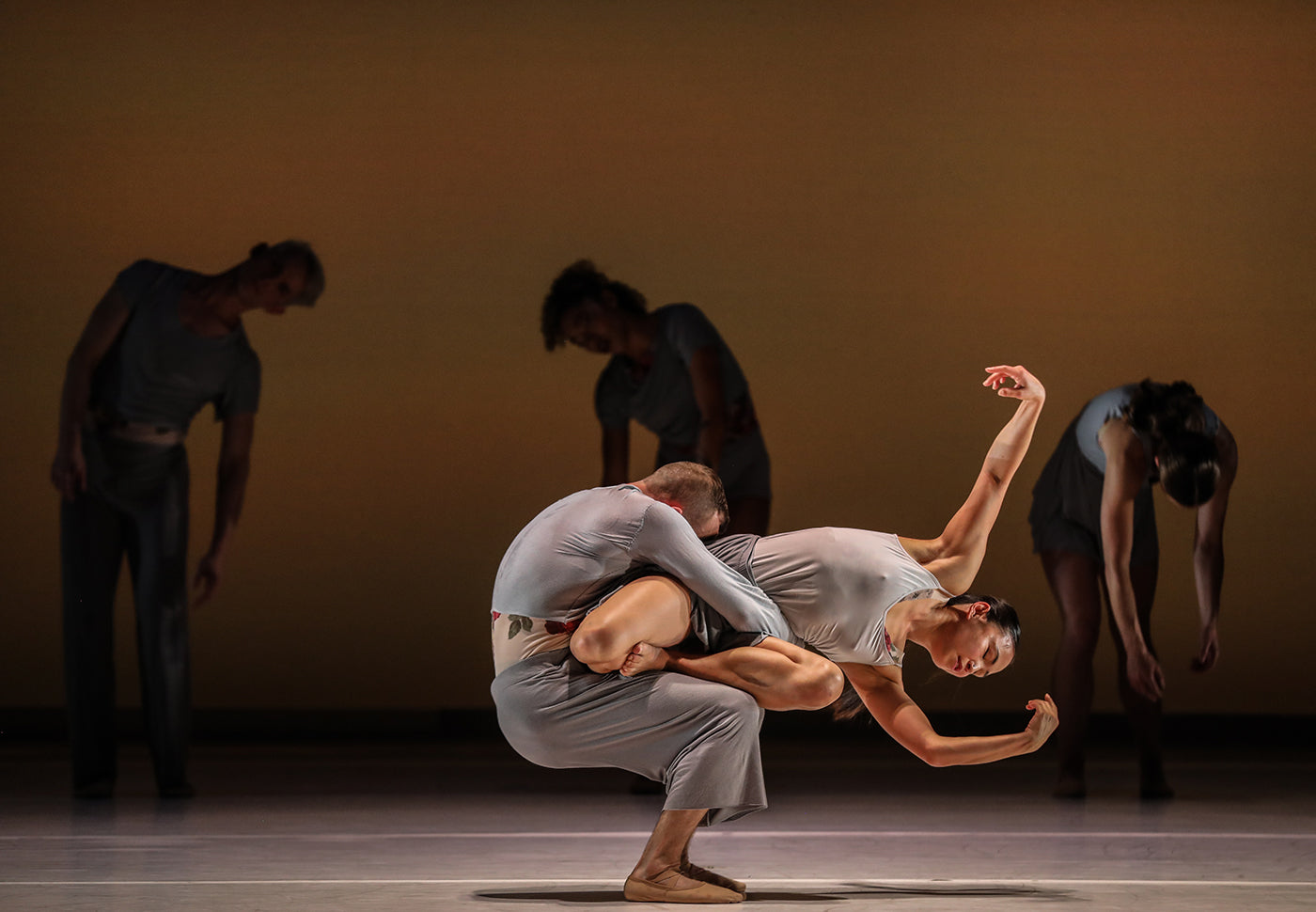The programme is split over two nights, with two solos presented at each. Theatrical flourishes and sober, angsty moods are evident across all four. Maya Jilan Dong’s “Whip,” for example, conjures images of warriors preparing for battle, an ominous drumbeat punctuating the ritual. Dong is Bai, an ethnic minority in China’s Yunnan Province, and her measured, processional movements draw on the traditional ‘whip’ dance of this region well as the elegance of Chinese choreographer Yang Liping, whom Dong has danced under for many years. Methodically she untethers herself from a long crimson drape, clutching a red-spattered pole, her fingers bloodied and expression solemn. These measured actions hasten as the pole takes on different shapes: a flag, a spear, a baton that paints fleeting blurs of white as it’s whipped and whirled.
The work’s centrepiece is a nail-biting sequence in which Dong slinks, twists and sprints, all with the pole balanced atop her head. When her waist-length hair tumbles out of its bun, she knots her tresses around the pole for another precarious, whip-fast phrase, her feet slapping and fingertips fluttering. The transition from slow and deliberate to wild and urgent is organic, well-paced, aided by the deft vibratos of an on-stage cellist (Joanne Clara, who also composed the score).
Dickson Mbi’s “Duende” also makes use of swings in tempo, this time to ruminate on human connections and self-actualisation. Here a slow-motion ambulatory entrance morphs into a tortured struggle of slides and balances, leaps and rolls, Mbi veering from loping, leonine pounces to robotic shudders, assuming a dejected, broken posture in both extremes. This natural-versus-mechanical dynamic makes fine use of his background as a popping artist while also dovetailing with the contemporary route Mbi is currently pursuing through commissions with the likes of Russell Maliphant, where stillness rather than swagger provides the ‘wow’ factor.
For me, the highlight of the programme was Ching-Ying Chien’s “Vulture,” a roaming, unsettling play on an ancient myth that suggests vultures don’t experience natural deaths; instead they fly towards the sun and melt away once their time is up. The Taiwanese dancer—winner of Outstanding Female Performance (Modern) at the 2017 UK National Dance Awards for her appearance in Khan’s “Until the Lions”—shows here that her choreography chops are as promising as her dancing ones, conceiving a highly original movement vocabulary that prickles with intensity, vulnerability and sinew. Emerging from the folds of a giant black drape, Chien dives and pecks, squirming her way through a series of unusual, nimble shapes. There’s a telling violence to her contortions, which involve broken backbends and spread-eagled chugging, her head regularly clashing with the floor.
Momentary calm settles over Chien as composer/musician Joseph Ashwin sets aside his guitar and gathers up her trembling body; chaos resumes, however, in a pounding sequence of jerky death metal and sudden, heavy falls, her face shrouded in a veil, with all its connotations of death and mourning. The final moments gesture at serenity and meditation, an angle I’d like to have seen given more attention, but I can’t fault the vigour building up to this conclusion, panicky and throbbing as it is.
Rounding off the bill is Joy Alpuerto Ritter’s “BABAE,” a sensual look at female power that touches on forms as varied as Philippine folk dance, voguing and Mary Wigman’s infamous “Witch Dance.” Surrounded by ceramic pots, Ritter performs a tense, hypnotic reverie, exhibiting a puppet-like control of her limbs. A punchy middle section ushers in a twirling tribal dance that registers first as a supernatural summoning and then a full-blown trance, her body swinging vigorously, overcome with frenzy. Like the other three on show, the piece is not without its opaque aspects, but overall demonstrates impressive command, creativity and intelligence—crucial qualities for expanding the contemporary dance landscape.









comments